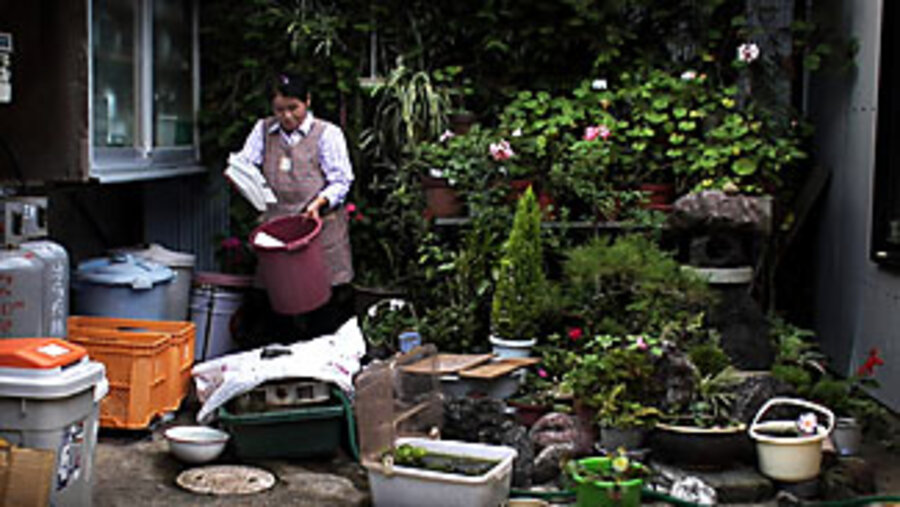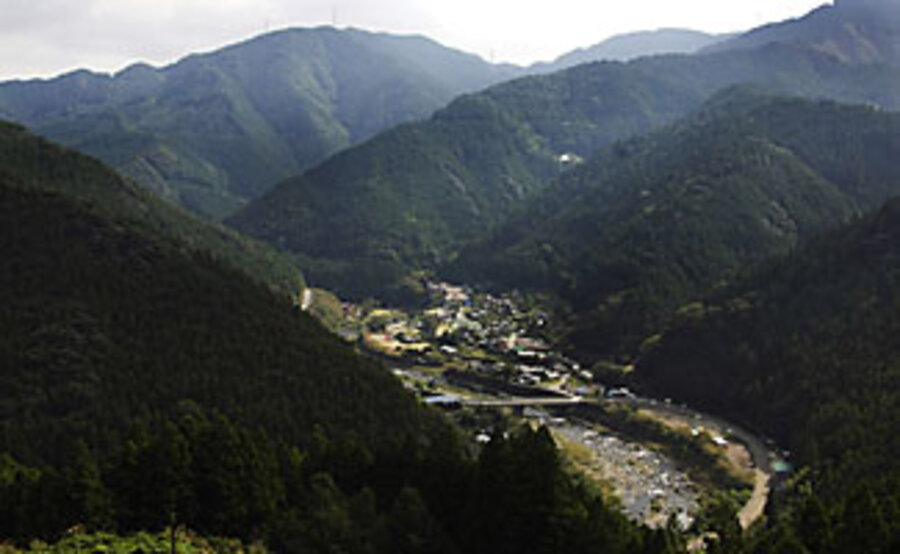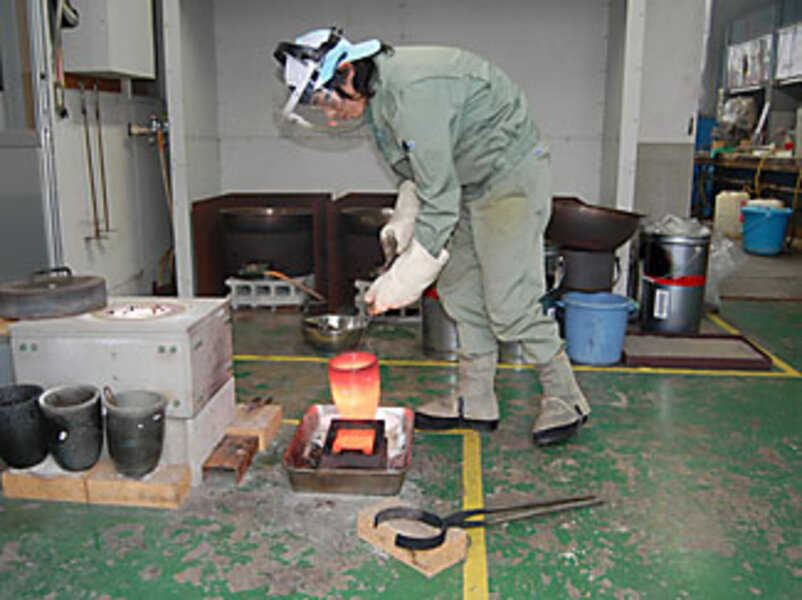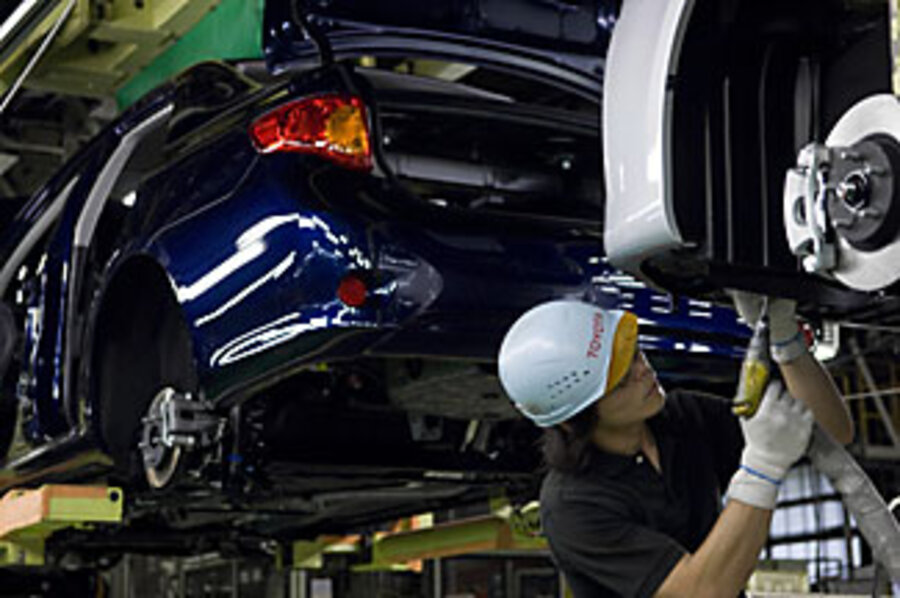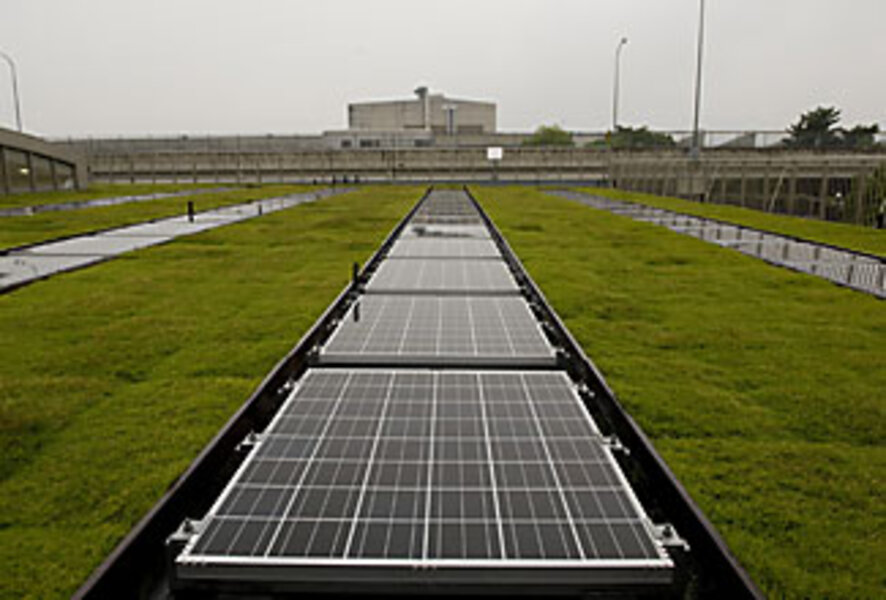Japan as ground zero for no-waste lifestyle
| Kamikatsu, Japan
Tucked almost imperceptibly into cedar-blanketed mountains an hour's winding drive from the nearest metropolis, Kamikatsu seems an unlikely spot for a revolution.
But try to throw even a candy wrapper away here, and it's quickly apparent that residents are radically reshaping their relationship to the environment.
This is a town singularly focused on banishing waste – all waste – by 2020. The 2,000 people of Kamikatsu have dispensed with public trash bins. They set up a Zero Waste Academy to act as a monitor. The town dump has become a sort of outdoor filing cabinet, embracing 34 categories of trash – from batteries to fluorescent lights to bottle caps.
Kamikatsu has probably pushed the recycling ethic as far as any community in the world. But it's just one small indicator of a national drive by Japan to position itself as a leader in the world's urgent quest to live greener.
The momentum cuts across a broad base – from individual recycling to factory efficiency to trading in electronic trash.
Just four decades ago, this small island nation had become an environmental cautionary tale, some of its cities synonymous with the high health costs of rapid postwar industrialization.
But the strengths that propelled Japan toward economic superpowerdom – efficient manufacturing and technological refinement among them – have also helped lay the foundation for a more energy efficient and less polluting society.
Last July, Japanese hosted the G-8 summit and gave it an environmental cast, touting how their manufacturers sustained a drive for energy stinginess long after the oil shocks of the 1970s gave way to the cheap fuel and SUVs of the '90s.
More recently, recycling efforts have burgeoned, as has progress in reducing waste in everything from cars to copy machines. And with cellphones and computers becoming obsolete at fiber optic speeds, Japan is emerging as a top competitor in what is known as urban mining – safely extracting valuable metals for industrial reuse.
"Japan has generally been better than [the US] internationally on a number of issues, including reducing electronic waste, recycling, and energy-efficiency," says Daniel Esty, director of the Yale Center for Environmental Law and Policy in New Haven, Conn. "The region sees Japan as technological leaders, and as we move more toward understanding the technological role in making environmental progress, there's a sense that Japan has a lot to share."
At Toyota's Tsutsumi assembly plant in Nagoya, Japan's answer to Detroit, evidence of a more environmentally sensitive car industry is on display before you even walk through a door. What was once a vast, gray expanse of industrial might has come to life – literally.
Large trees – 50,000 were planted in May – dot the visitor parking lot to offer a soothing greeting, says the plant's "sustainable initiative" manager. Insulating vines wend their way up the outside of an employee locker building. Some 22,000 square meters of ex-terior walls are coated with photocatalytic paint that, Toyota says, mirrors the ability of 2,000 poplars to absorb nitrous oxide and process oxygen.
The roof of the visitor center is a mat of grass, designed to reduce waves of heat by 3 degrees C. Solar lights dot the streets and 800-kilowatt solar panels blanket the tops of buildings. Even the red roadside flowers were genetically engineered to absorb noxious emissions and help evaporate water.
Behind Tsutsumi's face lift lies one of the globe's most visible bids to lighten the automobile's carbon footprint: the Prius. Hundreds roll off gleaming Line No. 2 here every day.
With the hybrid vehicle an Earth-friendly icon from Tokyo to Hollywood, Toyota decided it was important to have its backstory match up.
"Cars are a burden to the environment, but the hybrid helps," says Osamu Terada, leader of the sustainable plant initiative. "The plant is also important – we don't want manufacturing to cause a further burden."
Like the Prius, the Tsutsumi factory now relies on hybrid power, drawing 50 percent of its electricity from solar panels and 50 percent from capturing waste heat generated within the plant. The facility has reduced its carbon-dioxide emissions to half what they were in 1990, despite an increase in production. It eliminated production of landfill waste in 1999 and dispensed with incinerated waste in March.
"Toyota is certainly a visible leader in this regard," says Mr. Esty. "And other auto companies [such as Honda and BMW] are starting to pay attention to environmental concerns in both the cars they produce and their manufacturing process and supply chain as well. Even some American car companies are starting to wake up to these issues."
It's an approach that has long characterized Japanese business. "Japanese companies have been coming from a real hatred of waste," says John Elkington, founder of SustainAbility, a global corporate consultancy. "And that has gone deeply into their manufacturing philosophy."
At Dowa Eco-System Recycling Co., in Honjo, Japan, Yoshihiko Maeda thrusts his hand into an enormous, waist-high plastic bag and rifles through hundreds of used cellphones. To him, it's opportunity time.
Usually one phone, which weighs 100-130 grams (.22 to .3 lbs.), gives .04 grams of gold, according to Dowa officials. It's a small amount, but it's valuable to manufacturers in growing competition for resources and to recyclers, who can extract and refine it to the same purity as mined gold.
Recovering the contents of everything from air conditioners to circuit boards has taken on increasing global urgency as manufacturing has moved from developed to developing countries, which often lack proper recycling facilities. But extracting the materials is highly lucrative, meaning that businesses vie to snap up the waste. Because it often is hard to automate, unsafe practices can expose workers – including children in some parts of the world – to dangerous materials.
After 2005, says Yasuhiko Hotta, a waste management expert at the Institute for Global Environmental Strategies in Kanagawa, Japan, the government shifted its focus to international efforts. It's taking steps to prevent illegal trade in recyclables, including e-waste, and to develop the capacity for proper treatment of recyclables and waste in developing countries.
Japan's own aggressive efforts on what it has labeled the 3Rs – reuse, recycle, and reduce – have opened up numerous opportunities to support similar strategies in Thailand, Bangladesh, Vietnam, and Indonesia. They target improved recycling locally, although more effort is under way to bring waste back to Japan that demands highly refined processes.
Similarly, Dowa, which is considered one of the leading global industrial recycling firms, has a pilot project for e-waste collection and materials recovery in developing countries in Asia. The company, which recaptures about 440 lbs. (200 kilograms) of gold each month, can extract 18 metals from the 800 varieties of high- and low-tech waste that roll into this plant each month. Much of it's the detritus of everyday life – cellphones, watches, circuit boards, even pens.
On the company campus, where low, barracks-style buildings feed off a small central road, waste is sorted according to what can be broken down on site and what must be shipped to a village-size Dowa facility in northern Japan. Once processed, extracted materials can be sent back to manufacturers to create newer watches and more cutting-edge tools.
As he watches a worker take molten recovered gold and press it into a brick worth some 7 million yen, or about $76,000, Mr. Maeda says that the amount of gold and silver he sees has skyrocketed. And that's a good thing.
"Mines dig deep holes, and that produces waste," he says. A ton of earth, for example, typically yields five grams of gold. A ton of cellphones, meanwhile, contains 400 grams of gold, along with 500 grams of silver and 4 grams of palladium, according to Dowa.
Starting next year, the Japanese government will require telecommunications carriers to recycle all cellphones. "We used to think our resources were limitless 40 years ago, but now we can feel the limitation, so we recycle everything," says Maeda.
Many of the efforts to go green in Japan are more the work of individuals. Consider the mayor of Kamikatsu.
Kazuichi Kasamatsu grew up in the small town, watching its population drop by two-thirds and its economic prospects dwindle. Rice paddies were replaced with cedar farms – only to have the lumber business leave in search of cheaper labor. "There was always a sense that we might not make it," he says. "We struggled to figure out our future."
Passage of a waste-management law in 1997 forced the shutdown of the town's incinerator – and gave rise to a new sense of direction that drew inspiration from near (other rural areas in Japan) and far (the rapidly growing economies of Brazil, Russia, India, and China).
"Towns everywhere are dealing with the same issue – how to be sustainable," he comments. The Internet has boosted his fellow citizens' sense of themselves as international players who should observe and be observed, exchanging tips with counterparts around the world. He also says it was time to go against the tide of gauging wealth by the accumulation of more stuff. "We want to produce things that take into account what happens after it's used. If it can't be recycled in any way, then you can't produce it."
The town now has an 80-percent recycling rate, up from 55 percent 10 years ago. (The US national recycling rate is an average of about 34 percent, with some cities considerably higher.) The local hotel – where tourists arrive by the bus load to dip into baths fed by mountain hot springs – is heated with biomass burners, saving 7 million yen annually, or about $76,000, and reducing its CO2 emissions.
The change has spread to the minutia of life. Local merchants offer raffle tickets for empty cans and hold drawings for small prizes. People volunteer to pick up illegally dumped materials and snatch up everything that passers-through toss on the road.
Sonoe Fujii, who runs Zero Waste Academy, says she sees more people eating with reusable chopsticks and carrying ecobags, including some made by local women from waste materials. As the town prepares to host a conference of "the most beautiful villages in Japan," clusters of retirees gather on the roadside to put in plants and do some weeding.
Perceptions are changing too. "Garbage has a negative connotation," Ms. Fujii notes. "But when garbage is brought to the town dump and can be recycled, it can have a new life. People smile and chat about the garbage. They have made a strong contribution."
She tells people that while the policy benefits the environment, it also saves them money – allowing for greater town investment in education, among other things. The flow of observers coming to check out the garbage initiative, she adds, bodes well for the future. And as a young person, she's glad to see at least a few people like her heading back to the countryside, attracted by the prospect of a more environmentally friendly lifestyle.
Fujii hopes that recycling won't be so onerous in the future as manufacturers figure out how to reduce waste and reuse more materials. The next move has to come from business, she asserts. For now, Kamikatsu is aiming to meet its 2020 goal – and the prospect is energizing townspeople of all ages.
That is evident from Kikue Nii's busy back patio. A carefully attended array of potted plants share floor space with washed plastic bags that float like wind chimes from a sock hanger. Next to a tank of fresh-water crabs she draws from the local river, lies a row of plastic recyling bins.
Her practices, which she pushes her grandchildren to emulate, are not just impelled by the new environmental push. Her generation often invoke a long-standing Japanese ethic that has informed samurai and artisans alike: mottainai, or waste not.
"Each person has to do something," Mrs. Nii says, "so their children and grandchildren can have a more peaceful life."
•Amelia Newcomb reported from Japan as a fellow with the International Reporting Project.


